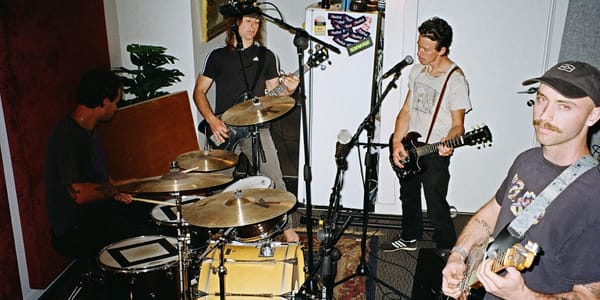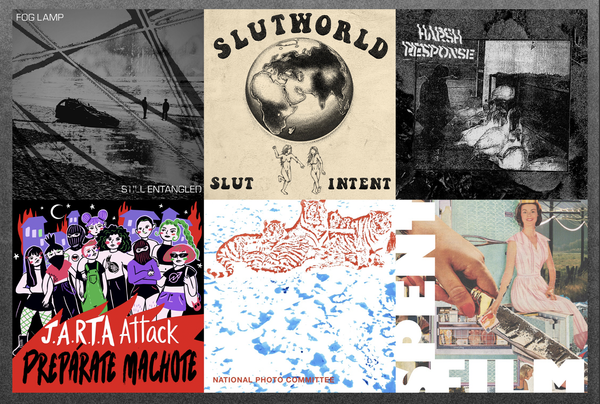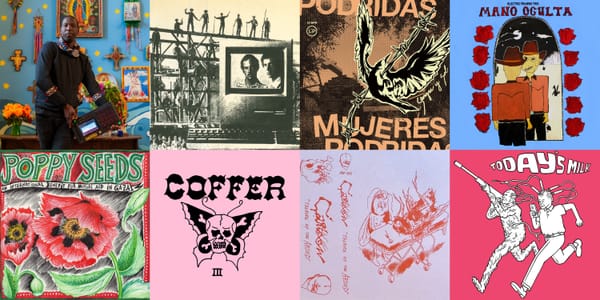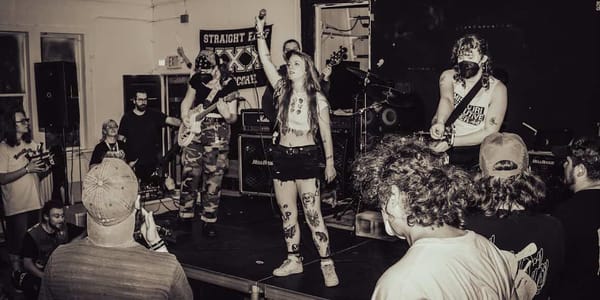porridge radio on punk rock as a pathway into making music
In this installment of “Record Exchange,” Dana Margolin discusses the works of Jay Reatard, befriending the frontperson of Moist Crevice, and the kinds of songs that encouraged her to become an artist.
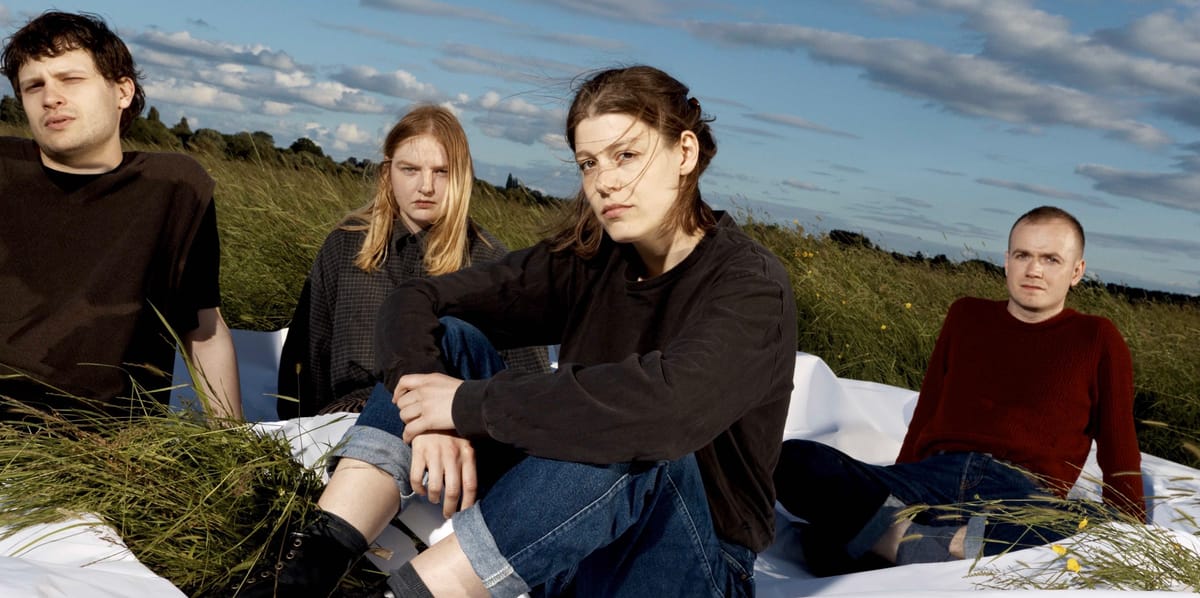
“Record Exchange” is a series of conversations between see/saw and a fellow punk enthusiast. Each person brings two songs to discuss. The latest installment is a chat with Dana Margolin, whose band Porridge Radio just released their new album Clouds in the Sky They Will Always Be There For Me on Friday.
There was no way Dana Margolin was going to sit at home waiting to get on a video call for this conversation about punk records. On a beautiful afternoon, she’s sitting outside at a café by the Tate Modern in London. Pigeons are bothering her constantly while she enjoys her lunch. It is a textbook great day one month before the release of her new Porridge Radio album. She’s outside eating a sandwich and listening to punk songs on headphones.
Margolin’s taste doesn’t often veer toward heavy music in recent years, but at 18, punk rock was there for her during a period where she was a voracious explorer of music. “There was a real phase where I needed to listen to loud, aggressive, kind of atonal music often,” she said. Among the artists whose work connected with her was the late Jay Reatard.
Revisiting these songs at this juncture, they lit up a familiar part of her brain: “I was listening to both albums being like, ‘This was so formative.’” Back when she didn’t have chops as a musician or singer, punk and rock’n’roll offered Margolin a potential roadmap to a life as an artist—the confidence to do it herself.
In the days leading up to Clouds in the Sky They Will Always Be There For Me’s release, she’s in a position where she has to examine the personal nature of her own work. That’s how this works—you make a record, and then other people talk to you about your record. “You just chat away and then you look at what’s written after and you’re like, ‘I said that, and it’s true and it’s embarrassing,’” she said. “Writing or performing a song is very different to having an interview about a song. I think that’s the hard bit.”
Vulnerability is inherent to the game, and it’s paramount to Margolin’s music. “The thing that I’m looking to do through everything I make, the thing that is foundational to it, is vulnerability and honesty and earnestness,” she said. “Like capturing an emotional core of something. To do that you have to be truthful and bear these ugly parts of yourself, these bits of yourself that you don’t necessarily want people to see.” It’s a balancing act. This moment outside seems like a reprieve from that tension—lunch in the sunshine, a good book, a cup of coffee, punk songs, and pigeons.
Dana’s pick: Moist Crevice’s “Doggy”
The frontperson, her stage name is Maura Sappilo, but we lived together for a year and we actually used to share an art studio. She’s an incredible visual artist and she had a period of work where she would do these line drawings in black pen. They were these huge stories and amazing narratives and have loads of words all over them. She actually made a music video animation for us on the last record. She makes all her own outfits for Moist Crevice, these absolutely incredible, extravagant, weird things. It’s really intense and amazing.
There’s a kind of freeness to what they do. The drummer is a really good guitarist but he wanted to play drums. He wanted to do something he wasn’t as good at and have fun doing it. The singer is an incredible artist and had never been a singer, and she was just like, “I want to be in a band.” It’s that kind of band where it’s more about “let’s have a space to figure out how to embrace doing something for the fun of it and the sake of the art of it.” They bring so much energy and joy to everything they do.
see/saw’s pick: Enemic Interior’s “Esperit Isard”
It’s perfect. You don’t need more. You don’t need choruses to come back. When I’m writing, I never think [in structure]. What we get is songs with quite weird structures a lot of the time. I don’t know if you’ve noticed that we do that, but it’s not really on purpose, it’s just because that’s the way that the song says “this is how I go” and you just follow it.
On this new record, as well, it’s kind of like you have the first half of the song, which is verse verse, and the second half is the chorus. We often have kind of arguments within the band where it’s like, “OK, so go to verse two” and everyone has a different idea of what verse two is. We’ll have been playing a song for like a month and then we’re like, “OK so you know in the chorus,” and it’s like, “Which bit would you say is the chorus?” But I do really relate to this kind of thing. Maybe that comes from listening to this kind of punk as a teenager.
Dana’s pick: Jay Reatard’s “Death Is Forming”
My manager Josh is a really old friend of mine. We met when we were 18, and Josh runs a little tape label. We made friends when we were teenagers because we both were just obsessed with finding bands and talking about music. That was our foundational thing. He would often make me these mix CDs, and Jay was on one of those. I just remember hearing him being like, “This is amazing.” I got both albums and listened to them all the time.
I didn’t realize that he died. There’s a documentary about him, isn’t there? I think I watched it back then. I remember being so saddened to hear of his life and death. I think I was 18 at the time like, “This is like perfect music. It just completely captured something really special.”
This song is kind of dissociative, but in a way that puts a frame around the dissociation. It’s contained within something. It’s not just this thing where you can’t hold on to it. It’s so precise, but there’s something so awkward about it but also so grounding and holds you in it. I love it.
He was so incredible at writing love songs completely smothered in darkness.
Yeah, which is also true of the kind of love songs I write. [laughs] There are some songs on our new record which I really wrote being like, “I’ve written a beautiful love song.” And I sent “In a Dream I’m a Painting” to my sister and she was like, “This is so sad.”
see/saw’s pick: Tee Vee Repairman’s “Lights Out!”
Perfect. You know what I was thinking is it’s exactly bands like that, making music like that, that made me realize I could also write songs and play music when I couldn’t play instruments. I’d never sung before outside of being a child in school choir. It was hearing bands like that which made me feel like “maybe I can do this as well. I have loads of ideas. I should get involved.” I couldn’t play guitar when I started writing songs, I couldn’t sing, I’d never really been on stage, I didn’t know what I was doing. But this was the exact vibe. It’s inspiring.


